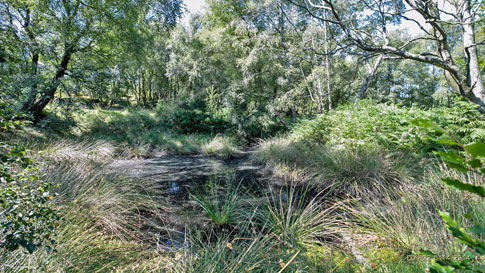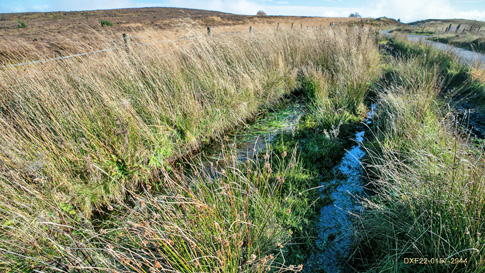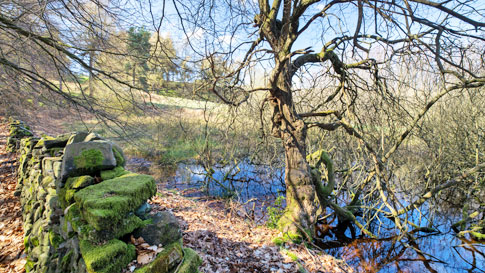| |
| Odonata is an order of insects which includes both Dragonflies and Damselflies. Dragonflies belong to the sub-order Anisoptera and Damselflies to the sub-order Zygoptera. Both sub-orders are well represented in the Goyt Valley. Ponds form an important part of my hunting strategy. |
| |
| In the Goyt Valley there are three ponds I rely on. Pond number one is the large pond closest to the A5004. Also known locally as 'The Old Steam Pond' (artificial for the old railway). Number two what I call a true moorland pond and pond number five, also a moorland pond. In reality all are now moorland ponds as the water is sligthly acidic. Ponds discussed in more detail elsewhere. Images posted can be diverse including males, females, varieties, settings, postures, ovipositing (egg laying) and mating. Entries in italicised typeface include video. |
| |
|
| |
| |
| |
|
| |
| Pond number one: SK 024 752 - Elev: 385 metres
Species I can confirm I have recorded here:
- Four-spotted Chaser Dragonfly
- Broad-bodied Chaser Dragonfly
- Emperor Dragonfly
- Black-tailed Skimmer Dragonfly
- Common Darter Dragonfly
- Black Darter Dragonfly
- Common Blue Damselfly
- Large Red Damselfly
|
|
Pond number two: SK 003 741 - Elev: 422 metres
Species I can confirm I have recorded here:
- Broad-bodied Chaser Dragonfly
- Southern Hawker Dragonfly
- Common Hawker Dragonfly
- Common Blue Damselfly
- Large Red Damselfly
|
| |
|
|
 |
|
Pond number five: SK 009 774 - Elev: 330 metres
Pond number five is on the West side of the Fernilee Reservoir (see route 2). It is easily missed. It is also turbid with all the vegetation and lack of light due to an umbrella of trees. The surroundings include dense vegetation including bracken. An almost impossible place to obtain a decent photograph of.
That said, I like the place and like to sit on a large tree stump on the far side of the pond when the midges give me permission.
Species I can confirm I have recorded here:
- Black Darter Dragonfly
- Common Hawker Dragonfly
- Southern Hawker
|
| |
|
|
| Pond Number 6: SJ 999 763 - Elev: 439 metres
Previously described merely as a roadside ditch, this has now been promoted to the rank of pond. It survived the 2022 drought and I have been visiting for at least three years, since I first spotted the Black Darter dragonfly there.
As the crow (or now a drone) flies, it is not that far from Pond Number 5 shown above.
Spotted my first 2023 frog spawn here on February 23rd. when it was 4 degrees. It was the pond vegetation that first suggested to me it could have some resilience.
My only recorded Odonata species: Black Darter Dragonfly |
|
 |
|
| |
 |
|
Pond Number 3: SK 019 757 - Elev: 314 metres
This pond has its own pages in the landscapes section and that section includes a map, as it is not obvious from any direction.
At the time of writing (May 2023), no Odonata species have been identified though I have never looked in season. I will be this year.
NB: The missing number is four. That relates to the tiny lake on the East side of the Fernilee reservoir, which rises and falls in sympathy with the rservoir itself. As a result marginal vegetation is absent therefore there is no significant Odonata presence. I have seen the odd Damselfly thereabouts but I would not rest by that body of water in the hope of seeing anything significant. |
|
| |
| Additional notes: |
| |
| Pond Number One the water level now rises and falls as a result (it is believed) of leaks. The water level there was stable for many years with all rocks in the water, closest to the car park, completely submerged all year round. Some limited marginal vegetation was evident and sufficient for the usual compliment of Dragonflies. I deliberately arranged one flat stone so the top was above the water level for the male Black-tailed Skimmer Dragonfly to land on. The latter rarely land on vertical reeds like all other species. I routinely visit this pond but I never stay now. |
| |
| top |
| |

